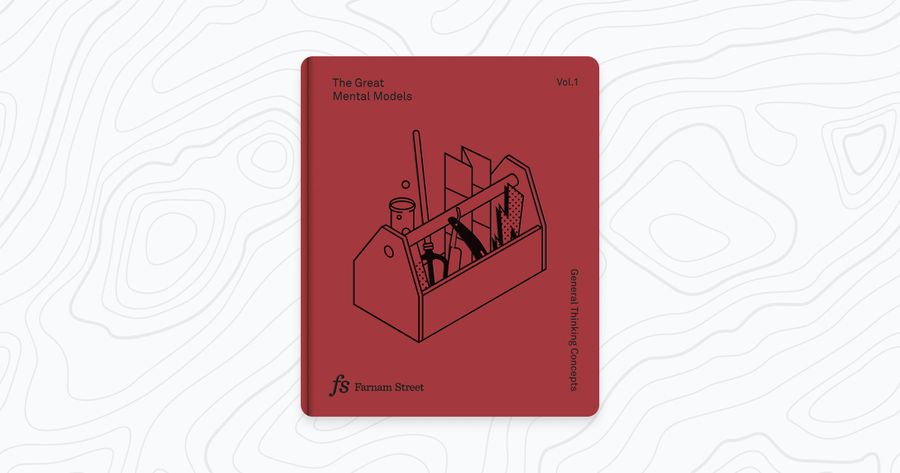Mental models are tools for thinking. The better mental models you have, the better thinker you are. Writing this reminds me of the saying: “You are only as good as your tools (and the average of five people that you spend most time with).”
While designing experiences, as it turns out, a lot of thinking is required. The quality of the output heavily depends on how good of a thinker you are. This is true especially dealing with complex projects where multiple moving pieces work in conjunction with the project that we undertake.
So, how might we improve the quality of our thinking? One of the answer was employing a latticework of mental models. Last week, I finished reading Farnam Street’s book: The Great Mental Models. While I am still in the process of distilling the learnings from the book, I wanted to share some of the mental models that I thought were obviously employable for someone who designs experiences.
First Principle Thinking #
Reduce the problem down to fundamental truths that MUST hold and then build from there. Ask WHY multiple times till you reach a core problem that must be solved first. Don’t assume anything.
e.g., Instead of blindly implementing what we are told, we can begin by asking the “WHY.” And then followed by another “WHY” — Why do we need this functionality? And why is that?
We might come across as dumb (or sometimes an asshole, so better watch that tone when you say “WHY”) but we will make sure that we don’t assume anything and we won’t be dumb tomorrow.
Bonus e.g.,SpaceX was born because Musk applied “First Principle Thinking.”
“I tend to approach things from a physics framework,” Musk said in an interview. “Physics teaches you to reason from first principles rather than by analogy. So I said, okay, let’s look at the first principles. What is a rocket made of? Aerospace-grade aluminium alloys, plus some titanium, copper, and carbon fibre. Then I asked, what is the value of those materials on the commodity market? It turned out that the materials cost of a rocket was around two percent of the typical price.”
The Map is not the Territory #
Models are inherently flawed and that’s why they don’t represent the reality. It’s possible to completely understand a “model” of something and mistakingly assume that you know the reality but it’s not true. Models (or maps) are simply an oversimplification of the reality. Sometimes the reality changes and the models don’t and as a result it can become outdated. Also, when learning the model, think about the creator and the context under which the model was created.
e.g., Model of a user flow diagram. While reading it, we can think about when was it made? What are the changes that have happened in the interface after it was made? When was it last updated? Who made it? etc.
Related talk: The Map Is Not The Territory by Ethan Marcotte
Thought Experiment #
Play out your solutions in thought experiments based on the facts that you are in the know of and in control of. This method allows you to take a step back and play out multiple scenarios, identify decision points, identify faults, and come to an optimum solution.
e.g., This is equivalent to considering multiple scenarios in an experience. It could involve thinking in terms of: What happens if users tap on back instead of next? What happens when user quits the app in the middle of sign up process? What happens when users’ internet connection is dropped while making a purchase?
Second Order Thinking #
This is probably an evolution of Thought Experiment. This model encourages you to go a step further and consider the second order impact of decisions. You can use this model to identify the issues and actors outside the immediate problem that are likely to get affected by your decision.
e.g., What happens after you remove a piece of information from a page to reduce clutter? What will users do to find it?
Ocams Razor #
Given two equally good explanations of a phenomenon, the simplest one (with the fewer moving parts) is likely to be the correct one. Chase simplicity in your understanding. Chase simplicity in your decisions. Remove probability that comes with moving parts.
Simple but better.
e.g., A simple interface with less moving parts will always win over a complex interface because of the decreased cognitive overload required to process it. Who doesn’t want to work less?
What mental models do you apply in your daily work? Would love to know about more about them. (Ping me on Twitter maybe?).
